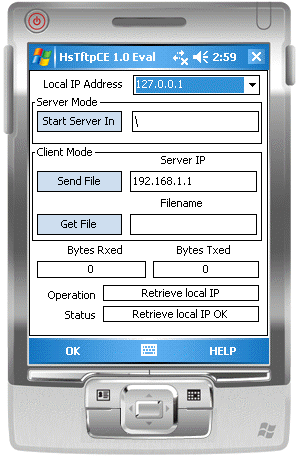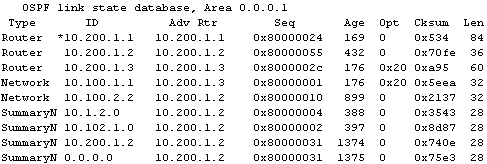

- #Tftpserver not working mac how to#
- #Tftpserver not working mac install#
- #Tftpserver not working mac update#
- #Tftpserver not working mac windows 10#
- #Tftpserver not working mac software#
This topic describes how to manage storage locations for voicemail, logs, and recordings.Īuto Cleanup feature automatically and periodically cleans up your CDR, voicemails, recording files, backup files, and logs (including event logs, email sent logs, operation logs, and system logs).
#Tftpserver not working mac software#
This topic describes how to add a shared folder on Mac and mount the shared folder to Yeastar P-Series Software Edition. You can save voicemails, recordings, and logs on a network drive. Network drive is used to extend storage space.
#Tftpserver not working mac windows 10#
This topic describes how to add a shared folder on Windows 10 and mount the shared folder to Yeastar P-Series Software Edition.

This topic describes how to set up a hard disk drive on Dell EMC PowerEdge R340 Server.
#Tftpserver not working mac install#
If you install Yeastar P-Series Software Edition on a physical machine, you can set up hard disk drives for storage.

Yeastar P-Series Software Edition provides local storage and supports external storage and network drive storage.īy default, all the voicemails, logs, and backup files are stored in the local disk (LOCAL). This topic describes the SIP settings on the Yeastar P-Series Software Edition for reference. This topic describes the preference settings that will be applied globally to Yeastar P-Series Software Edition. In this guide, we describe every detail on the functionality and configuration of the Yeastar P-Series Software Edition. MAC(0002F70066E3,0x1)/IPv4()/juno/juno.Administrator Guide for Yeastar P-Series PBX system. LoaderType: Linux kernel with FDT support Arguments: console=ttyAMA0,115200 earlyprintk=pl011,0x7ff80000 root=/dev/sda2 rootwait verbose debug
#Tftpserver not working mac update#
Next update the FDT entry for the TFTP boot entry: Add Boot Device Entryįile path of the FDT blob : juno/juno.dtbįinally, return to the main menu and select the new `TFTP boot example' option: Add Boot Device Entry Get the IP address from DHCP: yįile path of the EFI Application or the kernel : ImageĪrguments to pass to the binary: console=ttyAMA0,115200 earlyprintk=pl011,0x7ff80000 root=/dev/sda2 rootwait verbose debugĭescription for this new Entry: TFTP boot example Note that in this example the filesystem is on a USB stick ( `/dev/sda2'). TFTP on MAC Address: 00:02:F7:00:66:E3Įnter each setting as shown below, where `' is the IP address of your host PC in the form `'.

Select `TFTP on MAC Address': Firmware Volume (0 MB) Select `Add Boot Device Entry': Add Boot Device Entry Arguments: dtb=board.dtb initrd=ramdisk.img console=ttyAMA0,115200 androidboot.hardware=juno systemd.log_target=null rootwait root=/dev/sda2 sky2.mac_address=0x04 We've left this information here for legacy support.įirst select the `Boot Manager' option: Linaro image in NOR Flash This section is not applicable from Linaro Release 16.02 onwards the EDK-II based UEFI provided as part of the deliverables does not support TFTP boot. To revert back to the default boot behaviour: VExpress64# set bootcmd "$origbootcmd" UEFI TFTP the Juno will boot via TFTP on every power up. Reboot the Juno it should now boot via TFTP. Next modify U-Boot's boot command to boot via TFTP: VExpress64# set origbootcmd "$bootcmd" Save your host PC's IP address to the `serverip' environment variable: VExpress64# set serverip Power up the Juno board and interrupt U-Boot's default boot selection: The default boot selection will start in 3 seconds Device tree blob: `/tftpboot/juno/juno.dtb'.This example expects the paths to be as follows: Get the IP address of your host PC via `ifconfig', then from another system: $ tftp Īfter confirming that the TFTP server is working correctly, copy your kernel image, device tree blob, and ramdisk (where appropriate) to `/tftpboot/'. Test the server by creating a simple `test' file in `/tftpboot/': $ cd /tftpboot/ Restart the `xinetd' service: $ sudo service xinetd restart Install the following packages on your host PC: $ sudo apt-get update & sudo apt-get install xinetd tftpd tftpĬreate file `/etc/xinetd.d/tftp' with the following contents: service tftpĬreate directory `/tftpboot/' (this matches the `server-args' above) and set its permissions: $ sudo mkdir /tftpboot/ See this page for instructions on how to network mount a userspace filesystem using U-Boot. If using Juno, ensure you are using the front ethernet port. This tutorial assumes your host PC is running Ubuntu 14.04.1 LTS or later and is on the same local network as your development platform for simplicity's sake we assume a DHCP server is available on the network, too.


 0 kommentar(er)
0 kommentar(er)
